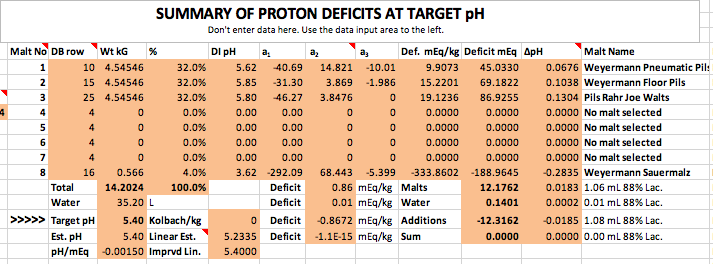have done few brews lately with some issues that were probably ph related. after doing checks on my beers for final kettle ph, it seems they've been coming in high. i cant really understand what has changed, as typically the software had me pretty much spot on to measured ph. i'd often not even bother measuring until it was in the kettle.
but now three beers in a row have been off the mark widely. first beer was likely off, but not confirmed. i base that on a harsh bitterness ive never experienced before. the second measured about .2 to .3 high in the kettle. and now today i've got a mash that's at 5.6ish when i shot for 5.4, so about the same miss of +/- .2ish higher than expected.
first beer was with version 5.4, and then recently i went up to version 5.5 for last two beers.
no changes to ingredients or process on my end. meter calibrated with 4/7 solutions immediately before brewing. the odd thing is that they've been off by the exact same amount both times, roughly .2 high. first two were hoppy pales, this ones a black lager.
the only thing in the beers that doesnt get put into the software are my brewtan B additions, but if i recall correctly its tannic acid or some derivative so it shouldnt be raising pH. and san francisco water is pretty damn soft, not much in the way of alkalinity. software shows only 30 for RA. 0 for permanent. temp hardness is only 52.
just seems odd that i keep missing by the same amount....
but now three beers in a row have been off the mark widely. first beer was likely off, but not confirmed. i base that on a harsh bitterness ive never experienced before. the second measured about .2 to .3 high in the kettle. and now today i've got a mash that's at 5.6ish when i shot for 5.4, so about the same miss of +/- .2ish higher than expected.
first beer was with version 5.4, and then recently i went up to version 5.5 for last two beers.
no changes to ingredients or process on my end. meter calibrated with 4/7 solutions immediately before brewing. the odd thing is that they've been off by the exact same amount both times, roughly .2 high. first two were hoppy pales, this ones a black lager.
the only thing in the beers that doesnt get put into the software are my brewtan B additions, but if i recall correctly its tannic acid or some derivative so it shouldnt be raising pH. and san francisco water is pretty damn soft, not much in the way of alkalinity. software shows only 30 for RA. 0 for permanent. temp hardness is only 52.
just seems odd that i keep missing by the same amount....

































![Craft A Brew - Safale S-04 Dry Yeast - Fermentis - English Ale Dry Yeast - For English and American Ales and Hard Apple Ciders - Ingredients for Home Brewing - Beer Making Supplies - [1 Pack]](https://m.media-amazon.com/images/I/41fVGNh6JfL._SL500_.jpg)













